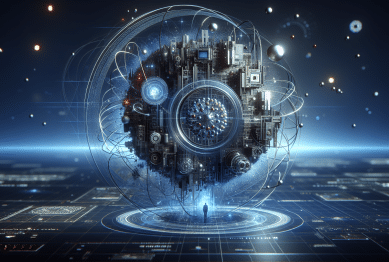Quantum computing sparks fascination, curiosity, and misconceptions. This guide unpacks what makes quantum computers unique, how they function, the myths many believe, and the real-world impacts emerging in science, finance, and technology.
What Actually Makes Quantum Computers Different?
Interest in quantum computing has exploded, yet many still wonder what sets these devices apart from regular computers. Rather than relying on classical bits, quantum computers use quantum bits known as qubits. Unlike classical bits that are either zero or one, qubits harness principles such as superposition and entanglement. This allows them to represent and process multiple possibilities at once, providing a fundamental leap in computational power for certain tasks. Such technology has the potential to shift how society solves complex problems, from drug development to climate modeling, making understanding the concepts behind quantum computers crucial for readers who want a clear view of this technological frontier.
Superposition allows a qubit to exist in many states simultaneously, but it only reveals one state when measured. This strange characteristic enables quantum computers to consider a vast number of possible solutions at once, offering a new approach to difficult computational problems. It’s important to note that superposition is fragile, which means qubits can lose their quantum state due to interference from their environment. This remains one of the greatest engineering hurdles for large-scale quantum computing. Still, the pursuit of stable and scalable quantum machines is advancing, drawing researchers from around the world and sparking collaboration across fields (Source: https://www.ibm.com/quantum-computing/what-is-quantum-computing/).
Entanglement is another unique quantum property, allowing two or more qubits to link their states such that the state of one instantly influences the others, even if separated by vast distances. This phenomenon has no true analogy in classical computing and introduces numerous possibilities for communication security and parallel processing. Although entanglement is fascinating at a conceptual level, leveraging it in practice to boost computational power remains a challenge. As innovators keep pushing boundaries, the world is learning that quantum computing offers both extraordinary potential and complex limitations (Source: https://www.scientificamerican.com/article/what-is-quantum-computing/).
Popular Myths and Misunderstandings Unveiled
Quantum computing enjoys a blend of science fact and science fiction. A widespread myth suggests that quantum computers are simply much faster versions of classical computers. In reality, their power is highly specialized. Only certain problems—like factoring large numbers or simulating quantum systems—show a dramatic speedup on quantum hardware. For everyday computing tasks, your laptop or phone still reigns supreme. Quantum computers won’t replace classical devices; rather, they will complement them for select, especially complex problems (Source: https://www.nature.com/articles/d41586-019-02935-4).
Another myth paints quantum computers as tools that will instantly break all encryption. While it is true that certain quantum algorithms, such as Shor’s algorithm, could theoretically compromise widely-used encryption techniques, building a machine powerful enough to do this is still a distant prospect. Most encryption remains safe for now. Meanwhile, researchers are developing new cryptographic methods resilient to quantum attacks, commonly called post-quantum cryptography. Organizations like NIST are spearheading efforts to standardize post-quantum secure encryption (Source: https://csrc.nist.gov/projects/post-quantum-cryptography).
Perhaps the most fantastic belief is that quantum computers can solve every problem quickly. In truth, quantum advantage is limited to certain problem types. For instance, searching unsorted databases, modeling molecules, or solving optimization problems may see improvement, but routine tasks like word processing or internet browsing do not benefit. Understanding where quantum computers excel, and where they do not, fosters realistic expectations and encourages research into hybrid quantum-classical solutions (Source: https://www.forbes.com/sites/forbestechcouncil/2021/05/27/six-myths-about-quantum-computing-and-its-future/).
How Quantum Algorithms Solve Problems Differently
Quantum algorithms stand apart due to their ability to tap into parallelism, a direct product of superposition and entanglement. For example, Grover’s algorithm lets a quantum computer search unsorted databases with far fewer steps than classical algorithms. This does not mean lightning-fast answers for all tasks, but it represents a tangible advantage for select challenges. Applying quantum algorithms requires unique thinking—quantum logic gates manipulate probability amplitudes instead of definite values, introducing an extra layer of abstraction that makes programming and debugging trickier (Source: https://www.nature.com/articles/s41586-019-1666-5).
One notable application is quantum simulation. Many molecules and materials exist in quantum states, which are nearly impossible to model with classical computation. Quantum machines excel at simulating quantum phenomena, potentially unlocking discoveries in chemistry, medicine, and advanced physics. These simulations could guide the design of new drugs, superconductors, or efficient fertilizers. Scientists are actively exploring how to use quantum algorithms to predict behaviors that classical models struggle with, accelerating innovation in ways traditionally deemed too computationally expensive or slow (Source: https://www.ncbi.nlm.nih.gov/pmc/articles/PMC6838640/).
Despite leaps forward, writing and running quantum algorithms today comes with obstacles. Quantum hardware is noisy, and results can be inconsistent. Much work is being devoted to error correction, a suite of techniques to carefully identify and mitigate the effects of unwanted interactions and measurement errors. As error rates shrink and hardware improves, the range of practical applications for quantum algorithms will grow, making them a more routine tool in scientific and financial research.
Emerging Real-World Applications and Industry Impacts
Quantum computing’s influence is beginning to reach from academic labs into businesses and public institutions. In finance, companies are exploring quantum methods for portfolio optimization, risk assessment, and fraud detection. Logistics firms use quantum-inspired algorithms to streamline shipping routes and manage resources. Researchers predict that early wins will come from hybrid models—part quantum and part classical—that can tackle tasks like supply chain complexity or large-scale simulations more effectively (Source: https://citiaps.citibank.com/Quantum_Computing.pdf).
Another area gaining momentum is quantum chemistry. Drug discovery often relies on simulating molecules’ intricate behavior, making it an ideal candidate for quantum computing. By modeling interactions at a quantum level, scientists can identify better candidates faster, potentially revolutionizing medicine. Even designing new batteries or sustainable materials may see acceleration from quantum-simulated experiments. While this revolution is just starting, large industries are already investing in partnerships with quantum hardware startups and research groups to stay ahead.
Data security continues to be front of mind, both as a risk and an inspiration for innovation. The theoretical threat posed by quantum decryption powers a surge of research into quantum-resistant cryptography, now considered a vital area for governments and enterprise. As industries prepare, practical efforts include running security audits, adopting new encryption standards, and building quantum key distribution systems—a quantum-safe method for sharing sensitive information. This growing field demonstrates the quantum future will be as much about security as it is about speed and computational leaps.
Challenges to Scaling and What the Future Holds
Despite its promise, scaling quantum computers from laboratory prototypes to globally transformative tools remains a monumental challenge. The quantum world is incredibly sensitive—tiny fluctuations in temperature, vibrations, or electromagnetic noise can easily disrupt calculations. This phenomenon, called ‘decoherence,’ limits the time qubits can maintain their quantum state, which restricts the length and complexity of computations. Solutions under exploration include new materials, improved error correction codes, and enhanced cooling systems (Source: https://www.nature.com/articles/d41586-020-03432-4).
Hardware is only part of the story. There’s an equally pressing need for quantum talent—engineers, computer scientists, and physicists who speak the language of quantum mechanics and algorithm development. Universities and international collaborations are investing in training programs, public tutorials, and online coursework. Equipping more people with quantum skills can help firms, research institutions, and nations to unlock the technology’s full value. Resources like IBM Quantum Experience and Google’s Quantum AI Lab allow anyone with a computer and curiosity to experiment remotely with actual quantum devices.
Looking ahead, most experts agree the quantum future will progress through gradual steps. The short-term will see hybrid solutions and specialized breakthroughs before broad, mainstream adoption. As both the technology and workforce mature, quantum computing will power advances across more fields, but the journey is likely to unfold over years, not overnight. The best way to prepare is to stay informed, follow progress, and embrace quantum-inspired solutions as they become available.
References
1. IBM Quantum. (n.d.). What is quantum computing? Retrieved from https://www.ibm.com/quantum-computing/what-is-quantum-computing/
2. Scientific American. (n.d.). What is Quantum Computing? Retrieved from https://www.scientificamerican.com/article/what-is-quantum-computing/
3. Nature. (2019). Quantum computing: How close is it? Retrieved from https://www.nature.com/articles/d41586-019-02935-4
4. NIST. (n.d.). Post-Quantum Cryptography. Retrieved from https://csrc.nist.gov/projects/post-quantum-cryptography
5. Citi Global Perspectives & Solutions. (n.d.). Quantum Computing and Finance. Retrieved from https://citiaps.citibank.com/Quantum_Computing.pdf
6. Nature. (2020). Quantum computing’s future: Challenges and hurdles. Retrieved from https://www.nature.com/articles/d41586-020-03432-4









